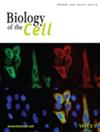Lung tumor organoids migrate as cell clusters containing cancer stem cells under hypoxic condition
Abstract
Background
Tumor hypoxia reshapes the microenvironment, driving progression, invasion, metastasis, and therapy resistance. Patient-derived tumor organoids, formed under three-dimensional conditions, preserve cellular heterogeneity and nutrient gradients, making them ideal for studying hypoxia-induced tumor responses. This study examines hypoxia-induced changes in lung tumor organoids from two patients, focusing on tumor-associated markers, stem cell markers, and migration capabilities.
Results
Our findings demonstrate that hypoxia distinctively modulates the expression of lung cancer markers thyroid transcription factor-1, cytokeratin 7, and ΔNP63 variant. Hypoxia also induces the upregulation of stem cell-associated markers, resulting in an increased proportion of cancer stem cells. Furthermore, hypoxic lung tumor organoids exhibit unique migratory behavior upon reoxygenation, driven by epithelial-mesenchymal transition and the elevated expression of matrix metalloproteinases 7 and matrix metalloproteinases 9, indicating their enhanced invasive potential.
Conclusions
These findings highlight the value of lung tumor organoids as models for studying hypoxia's complex role in lung cancer. Hypoxia significantly modulates lung tumor organoids growth, stemness, and migratory behavior, providing critical insights into tumor progression and therapy resistance.


 求助内容:
求助内容: 应助结果提醒方式:
应助结果提醒方式:


